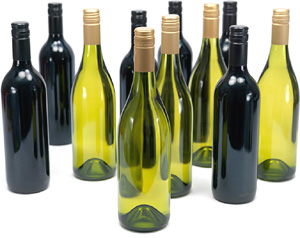 Hello,
Hello,
I made elderberry wine with elderberries I put in the freezer last year. I made juice out of them by cooking them in my steam juicer and followed your wine recipe on the website. I want to bottle the wine but do not have a corker. Do you have suggestions on how to stopper a wine bottle with out a corker?
Thank you for your help.
Becky
———-
Dear Becky,
You are correct in assuming that you need a corker to put in a regular wine cork stopper. The corker compresses the wine cork and plunges it into the wine bottle opening–something that can not be done by hand. The diameter of the cork you see when it come out of the wine bottle is much less than the diameter when it was forced in.
We do have some other options, as you are expecting. For example, we have push-in corks that you can push-in by hand. They are called mushroom corks. They have a smaller diameter than a full-size cork and have a black, plastic top for easy gripping. You could also go with screw cap bottles with screw caps, eliminating the stopper avenue all together.
We do not recommend using either of these methods of sealing the wine bottle if you are planning on aging the wine for longer periods of time, but if you plan on drinking the wine within 18 months these closures will work just fine.
Best Wishes,
Customer Service at E. C. Kraus
———————————————————————————————————
Ed Kraus is a 3rd generation home brewer/winemaker and has been an owner of E. C. Kraus since 1999. He has been helping individuals make better wine and beer for over 25 years.
Category Archives: Q&A
How Much Air Should Be In My Wine Bottle?
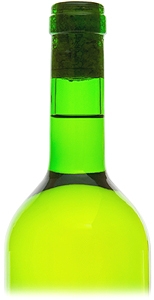 Good Morning,
Good Morning,
Thank you for the info in the newsletters they have been helpful.
I need to know how much air should be above the wine in the bottle. Could you let me know about that so I don’t over/under fill.
Dr. Thomas
———-
Dear Dr. Thomas,
I’m very glad to hear that you find our wine making newsletters informative and helpful. It is are sincerest goal to provide home winemakers with the tools they need to become successful, including information. Now, on to your question…
I am assuming you are referring to the amount of air-space that should exist between the wine and the wine cork stopper while in the wine bottle. When you are bottling your wine you want some head-space to promote proper aging, but you don’t want too much space, as this can contribute to oxidation of the wine.
Most winemakers agree that you would like about 3/4 inch between the wine and the cork stopper. If synthetic corks are being used, you can get away with a little more head-space in the wine bottle.
I hope this answers your question.
Best Wishes,
Customer Service at E. C. Kraus
———————————————————————————————————
Ed Kraus is a 3rd generation home brewer/winemaker and has been an owner of E. C. Kraus since 1999. He has been helping individuals make better wine and beer for over 25 years.
My Wine Tastes Terrible!
 Howdy,
Howdy,
I am new at wine making and just learning how to make white wine with one of your wine ingredient kits. I am in the last stages and decided to take a small taste test even though I still have 2 or 3 days left in the last stage. It is terrible! Can the wine get better in that short period of time or is it to far gone and will not come out good? I followed the directions word for word.
I did find 1 difference in the articles and the directions given on the ingredients kit. Articles say not to put fermentation lock but the directions say to do so. I did and I am wondering if this is the reason for the result that I am experiencing.
Thank you,
Tom
———-
Dear Tom,
It is normal for the wine to taste disgustingly bitter at this stage of the process. Aging plays a very important and dramatic role in the development of the wine’s flavor and the rounding of rough edges, so to speak. The wine will experience incredible improvement over the next 30 to 60 days and then marginally so over the following few months.
One interesting thing you can do is to open a bottle of the wine every 30 days and take notes on your impression of the wine. In essence, make a diary of the wine. The more detailed the better.
At a certain point further down the road you will notice that the wine is no longer changing or improving. This may be at around a year’s time; it may be 18 months; it may be 9 months. Every wine is different.
A lot of factors come into play such as were natural corks or synthetic corks used to seal the wine bottles? Typically, natural cork will age the wine more quickly than synthetic corks. How much body does the wine have? Heavier bodied wines take longer to age the lighter boded wines, (Merlot vs. Riesling). These are just two examples of many.
Going back to your concerns, I would not hesitate to bottle this wine with great optimism. I see no reason to believe that it will turn out bad based on the information you have given.
Best Wishes,
Customer Service at E. C. Kraus
———————————————————————————————————
Ed Kraus is a 3rd generation home brewer/winemaker and has been an owner of E. C. Kraus since 1999. He has been helping individuals make better wine and beer for over 25 years.
Why Does My Wine Have To Sit So Long?
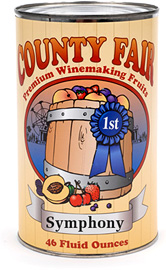 Hello Kraus,
Hello Kraus,
My neighbor is trying to show me how to make white wine using your County Fair Symphony concentrate. He told me that the wine will need to sit many months to age before it is ok to drink or bottle. I have read the homemade wine instructions on the side of the can and in the First Steps In Winemaking book that i got from you. I am still confused about why it has to sit so long before i can drink it.
Todd B.
———-
Dear Todd B.,
First, I would like to say that the Symphony grape makes an excellent wine. I’m sure you will be pleased with its outcome. Also, you are very lucky to have someone who can show you the ropes as it were, being a beginning wine maker and all.
Now, let me see if I can shed some light on the issue.
One of my favorite wine making tips is When In Doubt, Wait. What I mean to say by this is you can get into more trouble by rushing the wine making process along than you can by adding some extra time between the some steps.
Your friend has found through their own wine making experiences that you should wait several months before bottling. This is okay and will not hurt the wine in any way, and may potentially help the wine. But, it may not be necessary either, depending on the situation. Every wine is different in terms of aging need.
In my humble opinion in this situation, if the wine is bottled right after the fermentation has completed and the wine has had time to clear, it will be very drinkable at about 30 to 60 days. However, the wine should marginally improve on up until about 6 to 9 month.
What your friend may be doing (consciously or unconsciously) is trying to eliminate the temptation of drinking all the wine before it is at its best. If it’s stowed away for a few months before it’s bottled it will be out-of-mind and age just as well — if not better — while in bulk.
Best Wishes,
Customer Service at E. C. Kraus
———————————————————————————————————
Ed Kraus is a 3rd generation home brewer/winemaker and has been an owner of E. C. Kraus since 1999. He has been helping individuals make better wine and beer for over 25 years.
Has Vinegar Ruined My Glass Carboy?
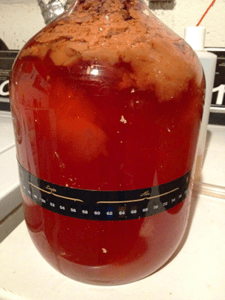 Please help:
Please help:
I recently noticed that a partially full carboy of apple cider wine had developed mother of vinegar proteins. What is the likelihood that I will be able to use that carboy again for wine making? I am currently using a sodium metabisulfite solution in an attempt to sanitize it. Will this be sufficient?
Thank you.
Robin M.
———-
Hello Robin M.
Sorry to hear about your apple cider going rogue vinegar on you.
The good news is that acetobacter – the bacteria the produces vinegar – is easy to destroy with a normal dose of sodium metabisulfite. Getting any glass carboys that have been exposed back into a sanitized condition will be no issue at all.
There are a couple of thing I would like to point out for your consideration. The first is that acetobacter can be a little sneaky, so you need to look beyond your glass carboys. You need to consider things like rubber stoppers, air-locks… any wine making materials that might have come into contact with the acetobacter. These bacteria like to hide in crevices, cracks and dark corners. Because of this, rough surfaces need extra-special attention.
The second issue is that acetobacter can become air-born. It can float onto counter-tops, the floor, floor-joists, etc. I’m not saying this to scare you but to make you aware of the potential that acetobacter has. With that being said, you should do a quick wipe-down the immediate area. You can use a solution of bleach and water, 1/4 cup to each gallon.
Happy Wine Making,
Customer Service at E. C. Kraus
———————————————————————————————————
Ed Kraus is a 3rd generation home brewer/winemaker and has been an owner of E. C. Kraus since 1999. He has been helping individuals make better wine and beer for over 25 years.
How Does A Steam Juicer Work?
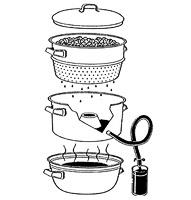 If you’re the kind of home wine maker that always seems to have fresh fruit coming your way, one piece of homemade wine equipment you should have on hand is a steam juicer.
If you’re the kind of home wine maker that always seems to have fresh fruit coming your way, one piece of homemade wine equipment you should have on hand is a steam juicer.
It works beautifully for extracting juices from a huge variety of different fruits, so no matter what type of fruit ends up falling your way, the steam juicer will be able to help you to turn it into wine.
A steam juicer works by bursting the fruit with steam and then collecting the fruit’s juice as it freely drains from the pulp.
As you can see in the diagram on the right, the fruit is put into a perforated pan with a lid. This pan then sits on top of a collector pan. All this sits over a pan of boiling water which is being heated by your stove.
As the water boils, steam rises through the opening of the collector pan to the fruit. As the fruit breaks down from the steam, it releases the juice from the pulp. The juice then falls through the perforated holes into the collector pan.
From there you can drain the juice into canning jars for later use, or you can drain it directly into your fermenter so you can start making your next batch of wine.
———————————————————————————————————
Ed Kraus is a 3rd generation home brewer/winemaker and has been an owner of E. C. Kraus since 1999. He has been helping individuals make better wine and beer for over 25 years.
How Big Does A Secondary Fermenter Need To Be?
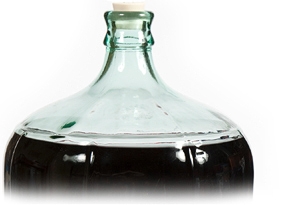 Help,
Help,
I’m getting together some homemade wine equipment. Question: does the secondary fermenter have to be (6) gal. for making (5)gal.of wine???
Thanks
James T.
———-
Hello James T.,
The primary fermenter needs to be about 6 gallons for 5 gallons batch of wine. This is to allow room for the foaming, otherwise you have a potential for foam to come through the rubber stopper, out the air-lock and on to your floor.
But when it comes to the secondary fermenter, you would like it’s size to match the size of the batch. There should be very little foam at this stage of the fermentation to be concerned about. By eliminating the extra head-space you are reducing your chances for having your wine adversely effected by oxidation.
Headspace is not so much important when the fermentation is still releasing gases, there’s no oxygen in this space, but it does become a consideration once the fermenetation has stopped and the rubber stopper has been taken off for whatever reason.
Best Wishes,
Customer Service at Adventures in Homebrewing
———————————————————————————————————
Ed Kraus is a 3rd generation home brewer/winemaker and has been an owner of E. C. Kraus since 1999. He has been helping individuals make better wine and beer for over 25 years.
Can I Add Sodium Metabisulfite To My Wine Now?
Here’s a question from a customer who has essentially aged his wine in bulk for a few months. He wants to know if he should be adding sodium metabisulfite at this time.
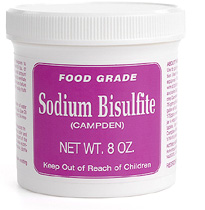 ———-
———-
Fellow Winemakers,
Can I add sodium metabisulfite to my wine now?
I have 25 gallon of grape wine in 5 gallon glass jugs that I made in September of 2009 filled to the top no air space to stop bacterial infection can I add sodium metabisulfite before I rack the wine? and how long should I wait before I rack the wine? I want to thank you for taking the time for all the information.
Thank again,
Richard R.
———-
Yes, you should put in the sodium metabisulfite, but add it after you rack the wine, not before. If you add it before the racking, much of the sulfites will dissipate into the air. You should use a full-dose (1/16 teaspoon per each gallon) unless you have already added it before since the fermentation has ceased. In this case, I would suggest adding a half-dose instead.
In general, you should rack the wine after 5-7 days of fermentation, then again once the fermentation is complete. Then a final racking is done after the wine has clear. This can take anywhere from 2 to 6 weeks. You can bottle the wine at this time, or you can elect to leave it in bulk for a while to age.
Best Wishes,
Customer Service at Adventures in Homebrewing
———————————————————————————————————
Ed Kraus is a 3rd generation home brewer/winemaker and has been an owner of E. C. Kraus since 1999. He has been helping individuals make better wine and beer for over 25 years.
Why Does A Wine Recipe Call For Raisins?
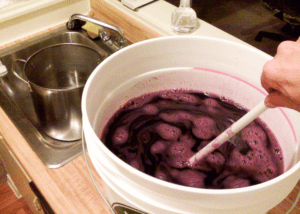 Hi,
Hi,
What value, if any is there to adding raisins to a wine recipe? Because I see some wine recipes using the same fruit-some use raisins and some don’t. Thanks for your information.
Bernie C.
———-
Hello Bernie C.
Thank you for the great question.
It’s not unusual to find wine recipes that call for raisins, especially in some of the older wine making books that are geared more towards country style wines. Books such as, First Steps In Winemaking or, Winemakers’ Recipe Handbook have several recipes that utilize raisins.
By design, country style wines are very full-bodied with a lot of fruity flavors. Most of them end up sweet as well. They can be made from anything from apricots to raspberries.
Raisins may be called for because they are an abundant source of body. They can improve the mouth-feel of the wine by increasing its viscosity. This gives the wine a heartier, overall impression. It also causes the fruit flavors to linger on the tongue longer, producing a fruitier impression.
Raisins also add a caramel element to the wine. This is an effect that is caused by the browning, oxidative effects of sun-drying the raisins. This is the same characteristic found in Ports or Sherrys. This can be an advantage or disadvantage depending on the type of wine and preference of the wine drinker. You can reduce this characteristic by using Muscat, or white raisins instead.
I hope this helps you out.
Best Wishes,
Customer Service at E. C. Kraus
———————————————————————————————————
Ed Kraus is a 3rd generation home brewer/winemaker and has been an owner of E. C. Kraus since 1999. He has been helping individuals make better wine and beer for over 25 years.
My Wine’s Bubbling The Wrong Way
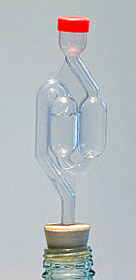 Hi Wine Helpers,
Hi Wine Helpers,
On the second rack it seems like the fermenting has stopped!(about 10 days) no bubbles in the air lock that I have on my gallon glass carboy, then last night I looked at the air lock and it looks like the wine is pulling a vacuum the water is on the wrong side. What do you think?
Justin
———-
Dear Justin,
Glad to hear that your fermentation appears to be finished after 10 days. This is about average for the amount of time it typically takes for the fermentation activity to complete.
I understand how you can be concerned about seeing the air-lock looking like it’s going backwards, but this happens from time to time. It’s being caused by the wine chilling down at night. As any liquid becomes cooler it contracts. The slight shrinkage of volume that is occurring in your gallon glass carboy is what is causing the vacuum, particularly when your rubber stopper is nice and snug.
Best Wishes,
Customer Service at E. C. Kraus
———————————————————————————————————
Ed Kraus is a 3rd generation home brewer/winemaker and has been an owner of E. C. Kraus since 1999. He has been helping individuals make better wine and beer for over 25 years.
